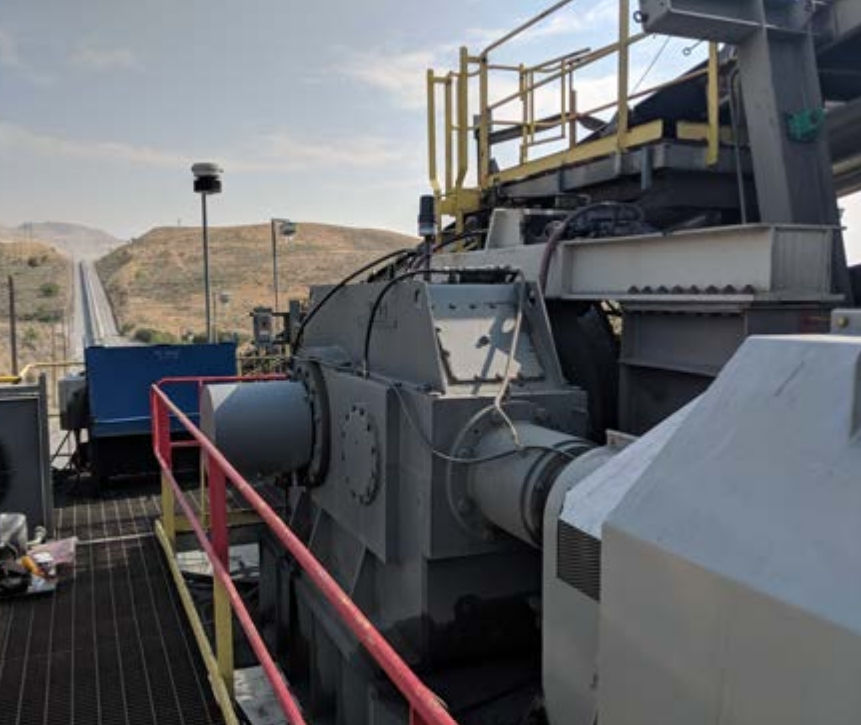Identifying Water-In-Oil Before Damage Occurs - Success Story
- Miniotec - Intelligent Solutions

- Jul 19, 2022
- 3 min read
Updated: Mar 7, 2024

Issues can arise at any time within an equipment’s oil lifespan, potentially leading to expensive repairs or catastrophic failure when not monitored.
Why Use Fluid Quality Sensors?
Online fluid sensors within oil condition monitoring systems provide the earliest detection of oil problems as and when they occur.
Fluid sensors are able to:
Provide continuous real time data and insight to lubricating oil health whilst the equipment is still in operation
Minimise repair costs through early detection and condition-based maintenance practices such as optimised fluid drain intervals
Measure several critical properties of the oil, including oil temperature, oil contamination, relative humidity, viscosity and wear debris, responsible for the most common oil issues of oil degradation affecting plant equipment
Reduce secondary damage to an asset due to mechanical faults
Maximise the operating life of the asset
“Fluid Quality and Wear Debris sensors through an online monitoring system provide a layer of insurance that the equipment’s oil is being monitored 24/7 and not intermittently unlike traditional lab analysis condition monitoring”
What Actually Happened?
Via remote monitoring, the fluid sensor and online monitoring system alerted a Client to extremely high levels of relative humidity (RH) after a brand new oil change for one of their mining crusher gearboxes. Through the automated alert, early intervention allowed the Client to act quickly and prevent costly repairs and further damage.
Timeline of events:
Oil was changed as part of routine, preventative maintenance program in a mining concentrator gearbox

Upon return to service, the Fluid Quality sensor detected almost 97% relative humidity (RH) immediately and alerted the Client. Operating temperature displayed variation as well.
An investigation identified the oil used was from a partially used oil drum that was left outside in the elements and not adequately sealed
The Client stopped the affected concentrator, flushed the oil and minimised downtime and potential secondary damage to the gearbox
How Did the Fluid Sensor Identify the Issue?
The data analysis in the below charts of gearbox oil condition within the lubrication system clearly indicate how quickly the RH readings increased to almost 100% immediately upon return to service following a routine oil change.
As the gearbox was in operation, the correlation between water-in-oil and gearbox wear in the oil circuit was significant. Upon return to service, the gearbox could have incurred some type of immediate damage due to water ingress.

When the lubricating oils were flushed, the RH within the gearbox began to return (and continued to drop) to acceptable operating levels.
Read more about Online Oil Analysis with this article: Uncovering the Power of Fluid Analysis: Using Advanced Online Oil Condition Monitoring Sensors
Outcomes
Had this not been discovered at the early stage it was by the sensor’s analytics, “free” water could have led to the water eventually separating and settling at the bottom of the sump. This type of issue can cause a lot of challenges in how to remove the water, as typical approaches, for example, using desiccant breathers, would not allow the water trapped at the bottom of the sump to escape.
As the Client would not have known about this condition by following a traditional lab oil analysis program, the outcome could have been a damage mechanism forming in the gearbox through mechanical wear that would lead to poor reliability, a potentially significant unplanned downtime event, increased maintenance cost and further loss of operating revenue.
"Typically, no one would question the quality of the new oil once changed after a maintenance event, therefore this type of issue could have continued unabated, potentially progressing to cause significant damage."
In this example however, the Client was fortunate to have an online oil quality monitoring system that enabled for immediate notification of a preventable condition.
Let us know your thoughts?
We are eager to understand your Digital Maintenance focus and where we could support.
Best;
info@miniotec.com
digitalmaintenance
onlineoilanalysis
bigdataandanalytics
futuretrends

.png)


